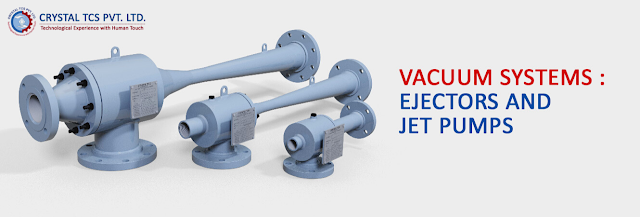An ejector is a simple piece of equipment and
it does not have any moving parts. These ejectors use either gas or fluid as a
motive force.
A vacuum is like air. If space contains air pressure
under the atmospheric pressure, then it is called a vacuum. If an ejector uses
compressed air & high pressure then it is called a vacuum ejector.
The compressed air will pass on through the convergent nozzle,
which will be then changed into the velocity energy. A compact ejector with
air-saving regulation uses fewer compressed air as compared to the traditional
vacuum ejector.
Working Principle of Vacuum Ejector
The vacuum ejector follows the venturi principle.
Basically, this vacuum ejector is divided into two types respectively
ejectors with eco-nozzle technology and single-stage ejectors. In a
single-stage vacuum ejector, the compressed air is supplied through the opening
of the ejector and then it passes through the nozzle.
While happening this process, the air is accelerated
& compressed. After passing from the nozzle, the compressed air slows down
and therefore the vacuum is produced. In this way, the air is drawn
through the vacuum system and the
compressed air will be escaped from the diffuser.
If the vacuum ejector contains eco-nozzle technology,
then the air will pass from many venture nozzles. The volumes of the nozzles
will be added to describe the total suction rate.
Benefits of Vacuum Ejectors
- Compact
shape
- Easy
to operate & Space-Saving Design
- No
heat generation and Lightweight
- Flexible
installation position
- No
moving parts, so low maintenance
- Fast
vacuum generation
- Effective Outcome
Applications of Vacuum Ejector
Usage of Vacuum Ejectors is depended on the type of the
ejector modules. Vacuum Ejector Manufactures
makes Vacuum ejector which used in robotic applications, industrial automation
devices, etc.
- When
the consumption of air is less in the module. Then this type of vacuum ejector the module is used in the packaging industry.
- When
vacuum ejectors are operated without system monitoring and valve control then
it is used to manage air-tight work-pieces.
- Vacuum ejectors with integrated system monitoring, valve technology, and IO-Link technology then it is used in automation management systems and robot components.

Comments
Post a Comment